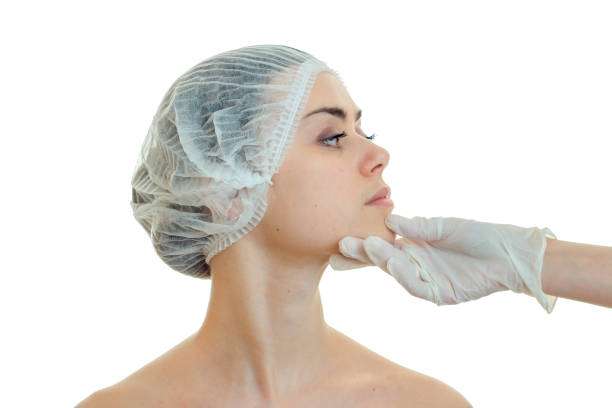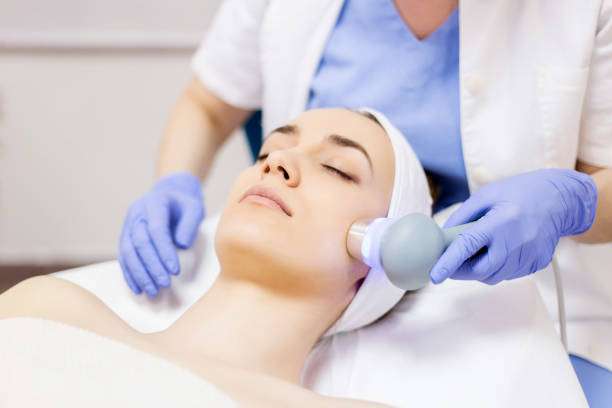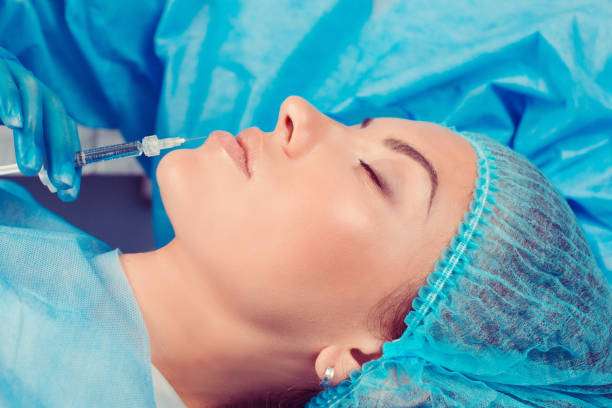The Science Behind Acne Scar Formation
Acne scar formation is a complex process involving multiple biological mechanisms. Here's an overview of the science behind it:
https://www.skncosmetics.com/l....aser-treatments/acne
Inflammatory Response
Initiation of Inflammation:
Acne begins when hair follicles (pores) become clogged with oil (sebum) and dead skin cells.
This environment fosters the growth of Propionibacterium acnes bacteria, which leads to an immune response.
Inflammatory Cascade:
The immune system responds by sending white blood cells to the site of infection, causing inflammation.
Inflammatory mediators like cytokines and enzymes are released, which can damage the skin's structural components.
Skin Damage and Healing
Damage to Follicle Walls:
When the follicle wall breaks, it can lead to damage in the deeper layers of the skin.
Minor breaks heal quickly, but deep breaks can lead to more significant damage and scarring.
Healing Process:
The body tries to repair the damage by forming new collagen fibers.
Collagen is a protein that gives skin its structure and strength.
However, the new collagen fibers are often disorganized compared to the original tissue, leading to scar formation.
Types of Scar Formation
Atrophic Scars:
Insufficient Collagen Production: If not enough collagen is produced during healing, it results in depressions or pits in the skin.
Ice Pick Scars: Deep, narrow scars due to significant collagen loss.
Boxcar Scars: Wider, rectangular depressions with defined edges.
Rolling Scars: Caused by bands of scar tissue that form under the skin, giving a rolling appearance.
Hypertrophic and Keloid Scars:
Excessive Collagen Production: When too much collagen is produced, it leads to raised scars.
Hypertrophic Scars: Raised scars that stay within the boundary of the original injury.
Keloid Scars: Extend beyond the original injury, forming large, raised areas.
Factors Influencing Scar Formation
Severity and Duration of Inflammation:
Longer and more severe inflammation leads to more extensive damage and a higher likelihood of scarring.
Genetics:
Genetic predisposition affects how one's skin heals and forms scars.
Skin Type:
Darker skin tones are more prone to keloid and hypertrophic scarring.
Intervention and Care:
Early treatment of acne and proper wound care can minimize scar formation.
Avoiding manipulation of acne lesions (picking or squeezing) reduces the risk of additional damage.
Cellular and Molecular Mechanisms
Fibroblast Activity:
Fibroblasts are cells responsible for producing collagen.
Their activity is regulated by growth factors like TGF-β (transforming growth factor-beta), which plays a critical role in scar formation.
Matrix Metalloproteinases (MMPs):
MMPs are enzymes that break down collagen.
Their activity is crucial for remodeling the extracellular matrix but can also contribute to improper healing and scarring if unregulated.
Angiogenesis:
The formation of new blood vessels is essential for providing nutrients to healing tissue.
Abnormal angiogenesis can lead to poor healing and scar formation.
Understanding these mechanisms provides insights into potential therapeutic targets for preventing and treating acne scars. By modulating inflammation, collagen production, and fibroblast activity, it may be possible to reduce the incidence and severity of acne scars.


@hussnakhan
Different Types of Jaw Surgery Explained
Jaw surgery, or orthognathic surgery, encompasses various procedures aimed at correcting jaw irregularities. Here’s a detailed look at the different types of jaw surgery:
Maxillary Osteotomy (Upper Jaw Surgery)
Purpose:
Corrects upper jaw issues such as overbite, crossbite, and open bite.
Addresses conditions like a receding upper jaw, protruding upper jaw, or facial asymmetry.
https://www.skncosmetics.com/c....osmetic-surgery/jaw-
Procedure:
The surgeon makes an incision in the gums above the upper teeth.
The upper jaw (maxilla) is then separated from the rest of the face and moved into the desired position.
Plates and screws secure the jaw in its new position.
Recovery:
Initial swelling and discomfort.
Soft or liquid diet for several weeks.
Full recovery in a few months.
Mandibular Osteotomy (Lower Jaw Surgery)
Purpose:
Corrects lower jaw issues such as underbite, overbite, or open bite.
Can also address a receding or protruding lower jaw.
Procedure:
An incision is made inside the mouth, on the lower jaw.
The lower jaw (mandible) is cut and repositioned.
Plates and screws are used to hold the jaw in its new position.
Recovery:
Similar to maxillary osteotomy, with initial swelling and discomfort.
A soft or liquid diet is necessary for several weeks.
Full recovery in a few months.
Genioplasty (Chin Surgery)
Purpose:
Enhances chin position and facial balance.
Often performed in conjunction with other jaw surgeries.
Procedure:
An incision is made inside the lower lip.
The chin bone is cut and moved forward or backward, or reshaped as needed.
Plates and screws are used to secure the new position.
Recovery:
Similar to other jaw surgeries, with swelling and a soft diet initially.
Full recovery typically takes a few months.
Bimaxillary Osteotomy (Double Jaw Surgery)
Purpose:
Simultaneous correction of both upper and lower jaw issues.
Addresses complex jaw misalignments and severe facial asymmetry.
Procedure:
Combines maxillary osteotomy and mandibular osteotomy.
Both jaws are repositioned to achieve proper alignment and balance.
Recovery:
More extensive recovery due to the involvement of both jaws.
Requires a longer period of soft or liquid diet.
Full recovery may take longer compared to single jaw surgeries.
Segmental Osteotomy
Purpose:
Corrects specific sections of the jaw rather than the entire jaw.
Used for localized issues such as gaps between teeth or segments of the jawbone that need repositioning.
Procedure:
Incisions are made to access the specific section of the jawbone.
The segment is cut, repositioned, and secured with plates and screws.
Recovery:
Depending on the extent of the surgery, recovery can vary.
Soft or liquid diet and similar care instructions as other jaw surgeries.
Considerations and Preparation
Orthodontic Treatment:
Braces are often required before and after surgery to properly align the teeth.
Pre-Surgical Planning:
Detailed imaging (X-rays, CT scans) to plan the exact movements and positions of the jaw.
Consultation:
Discuss potential risks, benefits, and recovery expectations with the surgeon.
Post-Surgical Care
Pain Management: Medications to manage pain and discomfort.
Diet: Adhering to a soft or liquid diet to avoid stressing the jaw.
Oral Hygiene: Special care to maintain oral hygiene and prevent infection.
Follow-Up: Regular follow-up visits to monitor healing and progress.
Understanding the different types of jaw surgery and their purposes can help patients and their healthcare providers make informed decisions about the best course of treatment for achieving optimal functional and aesthetic results.

How Liquid Rhinoplasty Differs from Traditional Rhinoplasty
Liquid Rhinoplasty:
Liquid rhinoplasty and traditional rhinoplasty are two distinct approaches to altering the shape and appearance of the nose. Each method has its own set of characteristics, advantages, and considerations. Understanding the differences between them can help individuals make informed decisions about which procedure is best suited to their needs and goals.
https://www.skncosmetics.com/c....osmetic-injectables/
Procedure;
Liquid Rhinoplasty:
Non-Surgical: Uses injectable fillers to reshape the nose.
Duration: Typically takes 15-30 minutes.
Anesthesia: Usually requires only a topical anesthetic.
Method: Fillers, often hyaluronic acid-based, are injected into specific areas to smooth out bumps, lift the tip, or correct asymmetry.
Traditional Rhinoplasty:
Surgical: Involves surgical techniques to reshape the bone and cartilage of the nose.
Duration: Can take 1-3 hours or more, depending on the complexity.
Anesthesia: Requires general anesthesia or sedation.
Method: Surgeons make incisions (either inside the nose or across the base) to access the bone and cartilage, which are then sculpted to achieve the desired shape.
Recovery Time
Liquid Rhinoplasty:
Recovery: Minimal downtime; most patients can resume normal activities within a day or two.
Side Effects: Mild swelling, redness, or bruising, which typically resolve within a few days.
Traditional Rhinoplasty:
Recovery: Requires significant downtime; patients usually need about a week off from work or school.
Side Effects: Swelling and bruising can last several weeks; full recovery and final results may take up to a year.
Results
Liquid Rhinoplasty:
Longevity: Results are temporary, lasting from 6 months to 2 years depending on the type of filler used.
Adjustability: Results can be reversed if hyaluronic acid fillers are used, by injecting an enzyme called hyaluronidase.
Traditional Rhinoplasty:
Longevity: Results are permanent.
Adjustability: Any further changes or corrections would require additional surgery.
Suitability
Liquid Rhinoplasty:
Best For: Subtle changes, such as smoothing out bumps, refining the tip, or minor asymmetries.
Limitations: Cannot make significant structural changes or reduce the size of the nose.
Traditional Rhinoplasty:
Best For: Major changes in the structure and shape of the nose, such as reducing size, correcting congenital disabilities, or repairing significant trauma.
Versatility: Can address a wider range of issues, including functional problems like breathing difficulties.
Cost
Liquid Rhinoplasty:
Cost: Generally less expensive; the cost varies based on the type and amount of filler used, but typically ranges from $600 to $1,500 per session.
Traditional Rhinoplasty:
Cost: More expensive due to the surgical nature; costs can range from $5,000 to $15,000 or more, depending on the complexity and the surgeon’s experience.
Risks and Complications
Liquid Rhinoplasty:
Risks: Generally lower risk, but potential complications include infection, asymmetry, and rare vascular complications if filler is injected into a blood vessel.
Reversibility: Hyaluronic acid fillers can be dissolved if needed.
Traditional Rhinoplasty:
Risks: Higher risk due to surgery, including infection, bleeding, scarring, and anesthesia complications. Potential for unsatisfactory results requiring revision surgery.
Conclusion
Both liquid rhinoplasty and traditional rhinoplasty offer unique benefits and have specific limitations. Liquid rhinoplasty is an excellent option for those seeking minor, temporary adjustments with minimal downtime and lower cost. Traditional rhinoplasty is better suited for individuals needing significant, permanent changes to their nose’s structure and function. Consulting with a qualified medical professional can help determine the most appropriate approach based on individual goals and anatomical considerations.

Top Benefits of Laser Skin Tightening
Laser skin tightening is a popular cosmetic procedure that uses laser technology to reduce the appearance of wrinkles and sagging skin. This non-invasive treatment stimulates collagen production and provides a more youthful appearance with minimal downtime. Here’s how it works:
https://www.skncosmetics.com/l....aser-treatments/lase
How Laser Skin Tightening Works
Understanding Collagen and Skin Elasticity:
Collagen: A vital protein in the skin that provides structure, strength, and elasticity.
Aging: With age, collagen production decreases, leading to wrinkles and loose skin.
The Role of Lasers in Skin Tightening:
Laser Types: Commonly used lasers include Nd
, fractional lasers, and infrared lasers.
Mechanism: Lasers emit heat energy that penetrates the skin’s deeper layers without damaging the surface. This heat stimulates collagen production and contracts existing collagen fibers.
Procedure:
Preparation: The skin is cleansed, and protective eyewear is provided.
Treatment: The laser device is moved across the treatment area. Patients may feel a warm sensation, and a cooling device is often used to protect the skin and enhance comfort.
Duration: Sessions typically last 30 minutes to an hour, depending on the area treated.
Post-Treatment and Results:
Immediate Effects: Some tightening is visible immediately after treatment.
Long-Term Results: Collagen production continues for several months, gradually improving skin texture and tightness.
Sessions: Multiple sessions (3-6) are usually recommended for optimal results, spaced a few weeks apart.
Benefits:
Non-Invasive: No surgery or incisions are involved.
Minimal Downtime: Most patients resume normal activities immediately.
Natural Results: Gradual improvement mimics the natural aging process.
Considerations:
Suitability: Ideal for mild to moderate skin laxity. Not suitable for severe sagging or those with certain skin conditions.
Side Effects: Temporary redness, swelling, and slight discomfort. Rarely, more severe side effects like burns or pigment changes.
Choosing a Provider:
Credentials: Ensure the practitioner is certified and experienced in laser treatments.
Consultation: Discuss goals, skin type, and medical history to determine the best treatment plan.
Conclusion
Laser skin tightening is a safe and effective option for those seeking to rejuvenate their appearance without invasive surgery. By stimulating collagen production, it helps achieve firmer, smoother skin with minimal discomfort and downtime. Always consult with a qualified professional to determine if this treatment is right for you.

Botox for Beginners: Understanding the Basics
Botox, short for Botulinum Toxin, is a popular cosmetic treatment used to reduce the appearance of wrinkles and fine lines. If you're new to Botox, here's a comprehensive guide to help you understand the basics:
https://www.skncosmetics.com/c....osmetic-injectables/
What is Botox?
Botox is a neurotoxin derived from the bacterium Clostridium botulinum. It works by temporarily paralyzing muscles, which helps to smooth out wrinkles and prevent the formation of new ones. While it’s widely known for its cosmetic benefits, Botox is also used for various medical conditions such as chronic migraines, excessive sweating, and muscle spasms.
How Does Botox Work?
When injected into specific muscles, Botox blocks nerve signals that cause muscles to contract. By preventing these contractions, the overlying skin becomes smoother and the appearance of wrinkles is reduced. The effects are temporary, typically lasting between 3 to 4 months.
Common Treatment Areas
Botox is most commonly used to treat:
Forehead lines: Horizontal lines across the forehead.
Frown lines (Glabellar lines): Vertical lines between the eyebrows.
Crow's feet: Lines around the outer corners of the eyes.
Bunny lines: Lines on the sides of the nose.
Lip lines: Vertical lines around the mouth.
Neck bands: Vertical bands in the neck area.
The Procedure
Consultation:
Discuss your goals and medical history with a qualified practitioner.
Understand the potential benefits, risks, and costs involved.
Preparation:
The treatment area is cleaned, and in some cases, a topical numbing cream may be applied.
Injection:
Using a fine needle, the practitioner injects small amounts of Botox into the targeted muscles.
The procedure usually takes 10-15 minutes.
Aftercare:
Avoid rubbing or massaging the treated areas.
Refrain from strenuous activities for at least 24 hours.
Follow any specific instructions given by your practitioner.
Results and Duration
Onset of Results: Initial effects are typically seen within a few days, with full results appearing within one to two weeks.
Duration: Results generally last between 3 to 4 months. Regular treatments are needed to maintain the effect.
Benefits of Botox
Non-Surgical: No incisions or general anesthesia required.
Quick and Convenient: Treatments are quick with minimal downtime.
Effective: Proven to reduce the appearance of wrinkles and fine lines.
Versatile: Can be used for both cosmetic and medical purposes.
Potential Side Effects
While Botox is considered safe, some potential side effects include:
Redness, swelling, or bruising at the injection site.
Headache or flu-like symptoms.
Temporary drooping of the eyelid or eyebrow.
Dry eyes or excessive tearing.
Choosing a Practitioner
To ensure safety and effectiveness, it's crucial to choose a qualified and experienced practitioner. Look for:
Board certification in dermatology, plastic surgery, or a related field.
Positive reviews and testimonials from previous patients.
A thorough consultation process where all your questions and concerns are addressed.
Final Thoughts
Botox can be a highly effective way to achieve a more youthful appearance with minimal downtime. By understanding the basics and choosing a reputable practitioner, you can enjoy the benefits of this popular treatment while minimizing risks. If you're considering Botox, start with a consultation to determine if it's the right option for you.

student





